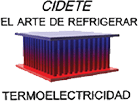In a world where energy consumption is at an all-time high, TRANSLATE is introducing innovative solutions to address the pervasive issue of waste heat. Through a series of three explanatory videos, the project delves into the intricacies of waste heat, the development of an Earth-abundant ionic thermocell, and the fascinating workings of the TRANSLATE device for waste heat recovery. In this blog, we provide a brief overview of each video, offering a glimpse into the groundbreaking advancements showcased by the project.
Waste Heat: The Problem and TRANSLATE’s solution
The video series begins with a sobering statistic – we lose approximately 70% of our daily energy as waste heat. The video sheds light on the detrimental environmental, economic, and sustainability consequences of this reality. However, hope emerges in the form of thermoelectric waste heat recovery – TRANSLATE’s nanochannel-based ionic thermocell technology is optimised for low-grade waste heat recovery. The potential impact spans across industries, from manufacturing and automotive to power plants and data centres.

TRANSLATE’s Ionic Thermocell
Building upon this foundation, the second instalment introduces TRANSLATE’s commitment to utilising Earth-abundant materials. Conventional thermoelectric devices face challenges with efficiency and toxicity, prompting TRANSLATE to explore the potential of wood-based ionic thermocells. The video provides insights into the delignification process of wood, unlocking the door to sustainable thermoelectric applications and offering a glimpse into the net-zero future TRANSLATE envisions.

The TRANSLATE Device: How Does It Work?
The final video takes us deep into the heart of TRANSLATE’s scientific breakthrough – the wood-based ionic thermocell. The cellulose produced after the delignification process is a key player, creating nanochannels with remarkable ionic conduction properties. The video further explores how these nanochannels, in the presence of a temperature gradient, can convert waste heat into electricity. This technology presents an eco-friendly and sustainable alternative to conventional thermoelectric devices.
(Related read: Functionalising Nanochannel Membranes)

TRANSLATE offers us a potential future where waste heat becomes a valuable resource. With a focus on Earth-abundant materials and innovative technology, the project paves the way for a cleaner, greener, and more sustainable energy transition.
Subscribe to TRANSLATE’s YouTube channel, stay informed about our innovative solutions, and join the movement towards a more sustainable future.
Connect with us on X (Previously called Twitter) and LinkedIn.








